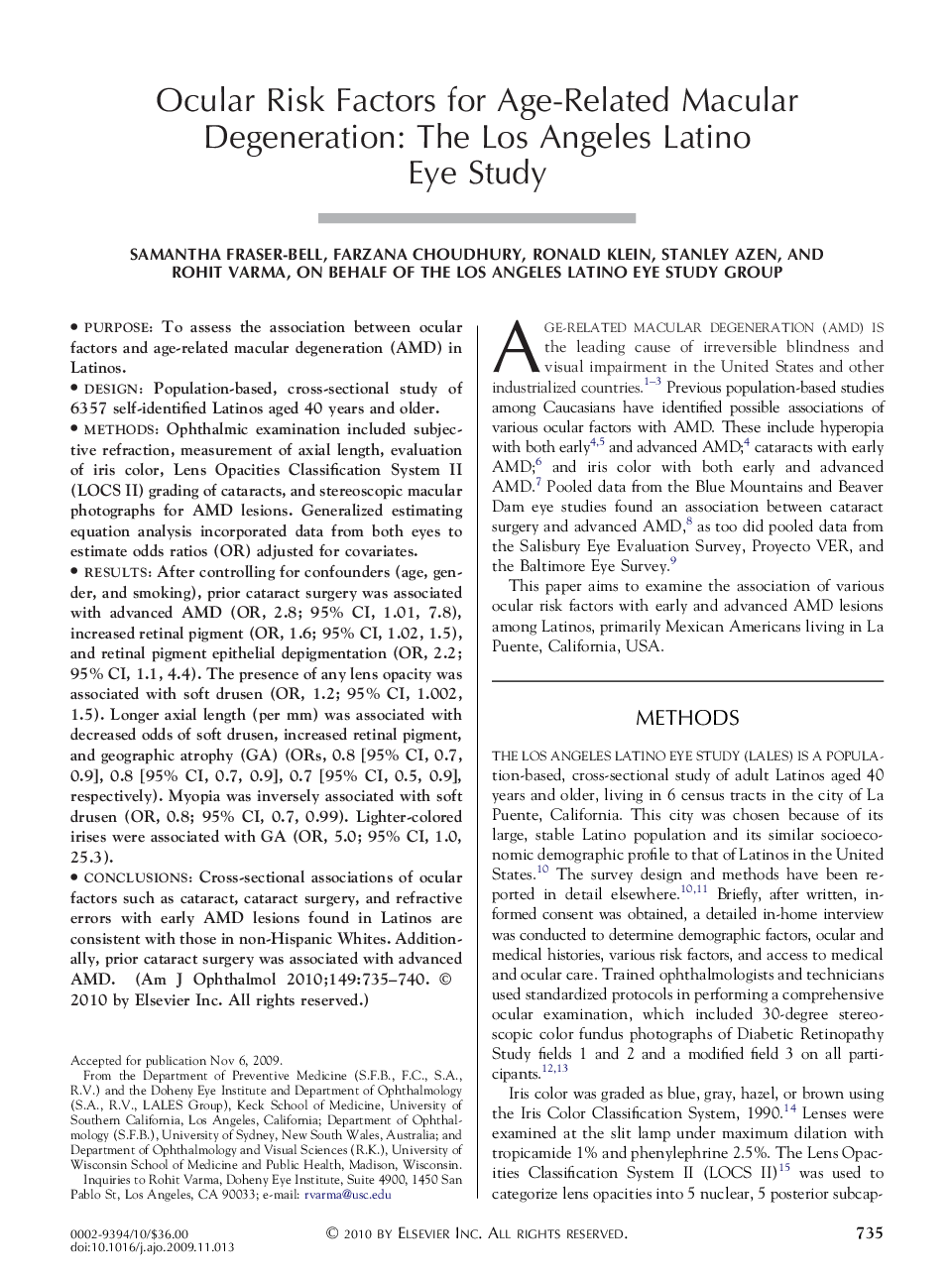| Article ID | Journal | Published Year | Pages | File Type |
|---|---|---|---|---|
| 4003896 | American Journal of Ophthalmology | 2010 | 6 Pages |
PurposeTo assess the association between ocular factors and age-related macular degeneration (AMD) in Latinos.DesignPopulation-based, cross-sectional study of 6357 self-identified Latinos aged 40 years and older.MethodsOphthalmic examination included subjective refraction, measurement of axial length, evaluation of iris color, Lens Opacities Classification System II (LOCS II) grading of cataracts, and stereoscopic macular photographs for AMD lesions. Generalized estimating equation analysis incorporated data from both eyes to estimate odds ratios (OR) adjusted for covariates.ResultsAfter controlling for confounders (age, gender, and smoking), prior cataract surgery was associated with advanced AMD (OR, 2.8; 95% CI, 1.01, 7.8), increased retinal pigment (OR, 1.6; 95% CI, 1.02, 1.5), and retinal pigment epithelial depigmentation (OR, 2.2; 95% CI, 1.1, 4.4). The presence of any lens opacity was associated with soft drusen (OR, 1.2; 95% CI, 1.002, 1.5). Longer axial length (per mm) was associated with decreased odds of soft drusen, increased retinal pigment, and geographic atrophy (GA) (ORs, 0.8 [95% CI, 0.7, 0.9], 0.8 [95% CI, 0.7, 0.9], 0.7 [95% CI, 0.5, 0.9], respectively). Myopia was inversely associated with soft drusen (OR, 0.8; 95% CI, 0.7, 0.99). Lighter-colored irises were associated with GA (OR, 5.0; 95% CI, 1.0, 25.3).ConclusionsCross-sectional associations of ocular factors such as cataract, cataract surgery, and refractive errors with early AMD lesions found in Latinos are consistent with those in non-Hispanic Whites. Additionally, prior cataract surgery was associated with advanced AMD.
